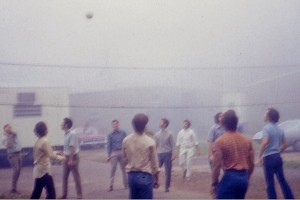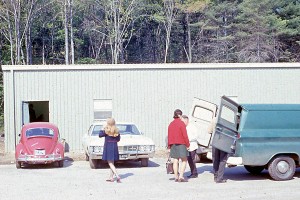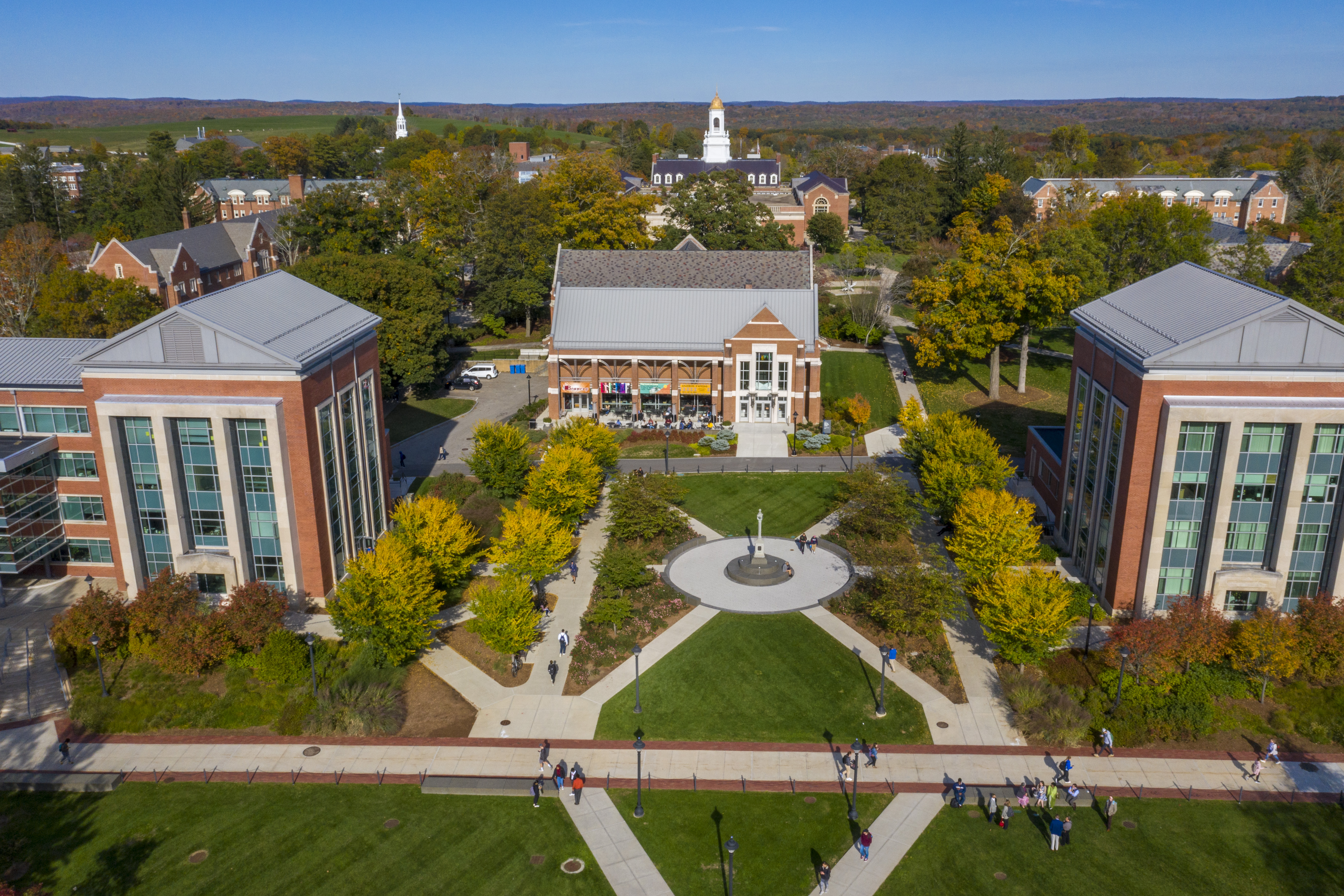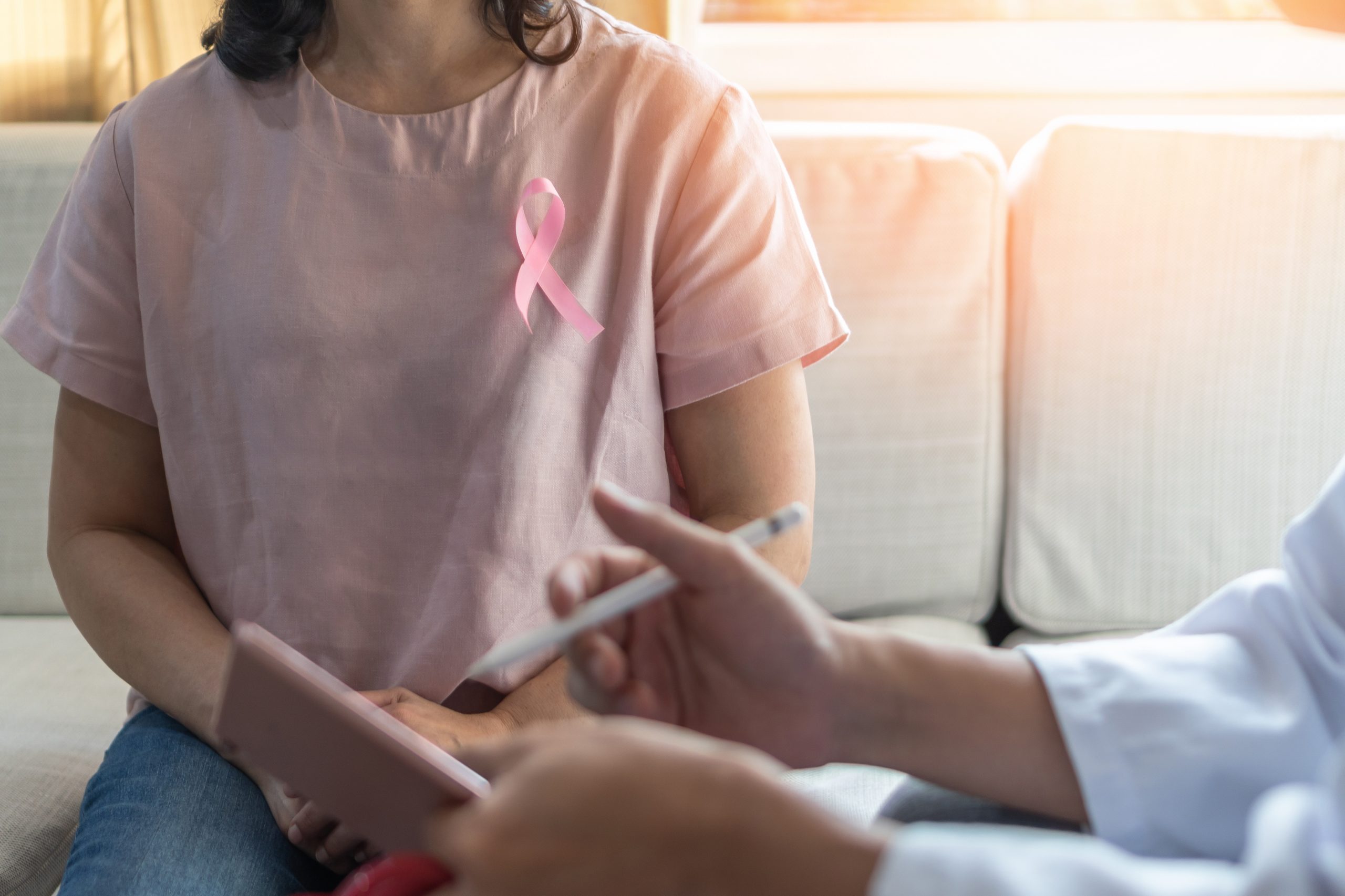They were supposed to be only temporary. But after surviving for more than four decades, the time is finally up for the tan metal buildings that have occupied the Health Center’s lower research campus. They will soon be demolished to make way for the next era in the Health Center’s history when the Jackson Laboratory for Genomic Medicine inhabits the space.

The humble-looking, mainly one-story structures were first built out of necessity. In 1967, the construction of the UConn Health Center was taking longer than originally expected. But the medical and dental schools were committed to admitting their first classes in the fall of 1968. So a decision was made to erect temporary structures at the base of the Farmington site to serve as classrooms. The buildings were put in by a company named “Butler” and that is why many people still refer to them as the Butler buildings.
Between 1968, when the first students arrived, and 1973, when John Dempsey Hospital opened, students spent the majority of their academic time in those buildings, while most of the clinical rotations took place at the hospitals in Hartford, including the old McCook Hospital. An auditorium in the Jones Home, a building adjacent to McCook, served as a lecture hall. The deans’ offices and administration were housed in a downtown Hartford office building. The library assembled its collection in a building on Asylum Avenue, near Woodland Street. For laboratory work, students were bused to the Storrs campus..
“For the full four years of my medical education, there was no UConn Health Center building that we all know at the top of the hill,” says Dr. Neil Olson, a graduate of the first medical school class in 1972. “It was just a hole in the ground- something to be hoped for with great anticipation. It finally did grow and take shape; but I’d already moved-on to my internship. So a lot of my early memories of medical school revolve around our classes, labs, and other activities in the steel buildings.”
Olson, who works in Student Health Services at UConn Storrs, remembers the students taking breaks to play football in the parking lot or the sandwich truck driver who learned their schedule and stopped outside the steel buildings, beeping his horn, just when their classes were dismissed.
Even the metal buildings had to be supplemented with trailers because of the severe space shortage on campus. For instance, a trailer was brought in to house the cadavers for the students’ dissection class. The door of the trailer would not close properly, leaving a four-inch opening to the outside world. The cadaver assigned to Olson was located near the door. He vividly remembers one winter’s day when the weather was especially bad. “I remember standing there on the side of the dissecting table with the wind and the snow and the sleet blowing in on me as I stood there in a trench coat wearing galoshes.”

The classes moved to the main building when it was finished but the steel structures remained and offered valuable space for laboratories and clinical research projects.
“The importance of the lower research campus buildings is that they were the first functional Health Center buildings and the embryonic beginnings of UCHC,” says former Health Center leader, Dr. Leslie Cutler.
Cutler says in the mid-to-late 1980s, the administration added more metal buildings (building 18) to the lower campus, to provide space for administrative functions and to free space in the main building for teaching, research and clinical activities.
Some of the buildings were remodeled in the mid 1990s to house some of the academic departments. Around the same time, there was an effort to move Health Center and Storrs startup incubator companies into the buildings.
Through the decades, the buildings have been home to electron microscopes, the state medical examiner’s office, the pharmacology department, an acoustics chamber and a cytogenetics lab. They have been home to basic scientific endeavors as well as clinical research initiatives that have studied healthy aging, workplace safety, and balance and gait issues in older patients.
“There’s a certain sadness that is felt contemplating the tearing down of the steel buildings,” says Olson. “Two years of my life and much hard work and angst took place there. But it is exciting to contemplate the scientific synergy that will occur with the melding of the clinical and research expertise that is represented by the coming together of the UConn Health Center and the Jackson Labs.”
With the demolition of the buildings scheduled to begin Wednesday, the most recent lab and research department occupants have been relocated to the main building. The Powerful Aging program has been moved to renovated space in the Administrative Services Building.
The Jackson Laboratory plans to break ground on the site in January with the completion of the project by the end of 2014. The 250,000 square foot research facility is expected to help Connecticut assume a position of global leadership in developing new medical treatments tailored to each patient’s unique genetic makeup.
“In essence, the new construction is being built on the foundation of UCHC and thus represents an evolution of both the site and the institution,” says Cutler. “An evolution based on outstanding science and the commitment to generate knowledge that will advance health and health care for the good of all.”
Follow the UConn Health Center on Facebook, Twitter and YouTube.



